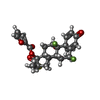登録情報 データベース : PDB / ID : 3cldタイトル Ligand binding domain of the glucocorticoid receptor complexed with fluticazone furoate Glucocorticoid receptor Tif2 coactivator motif キーワード / / / / / / / / / / / / / / / 機能・相同性 分子機能 ドメイン・相同性 構成要素
/ / / / / / / / / / / / / / / / / / / / / / / / / / / / / / / / / / / / / / / / / / / / / / / / / / / / / / / / / / / / / / / / / / / / / / / / / / / / / / / / / / / / / / / / / / / / / / / / / / / / / / / / / / / / / / / / / / / / / / / / / / / / / / / / / / / / / / / / / / / / / / / / / / / / / / / / / / / / / / / / / / / / 生物種 Homo sapiens (ヒト)手法 / / / 解像度 : 2.84 Å データ登録者 Shewchuk, L.M. / McLay, I. / Stewart, E. / Biggadike, K.B. / Hassell, A.M. / Bledsoe, R.K. ジャーナル : J.Med.Chem. / 年 : 2008タイトル : X-ray crystal structure of the novel enhanced-affinity glucocorticoid agonist fluticasone furoate in the glucocorticoid receptor-ligand binding domain.著者 : Biggadike, K. / Bledsoe, R.K. / Hassell, A.M. / Kirk, B.E. / McLay, I.M. / Shewchuk, L.M. / Stewart, E.L. 履歴 登録 2008年3月18日 登録サイト / 処理サイト 改定 1.0 2008年6月24日 Provider / タイプ 改定 1.1 2011年7月13日 Group / Version format compliance改定 1.2 2021年10月20日 Group / Derived calculations / Structure summaryカテゴリ chem_comp / database_2 ... chem_comp / database_2 / entity / pdbx_entity_nonpoly / struct_ref_seq_dif / struct_site Item _chem_comp.name / _database_2.pdbx_DOI ... _chem_comp.name / _database_2.pdbx_DOI / _database_2.pdbx_database_accession / _entity.pdbx_description / _pdbx_entity_nonpoly.name / _struct_ref_seq_dif.details / _struct_site.pdbx_auth_asym_id / _struct_site.pdbx_auth_comp_id / _struct_site.pdbx_auth_seq_id 改定 1.3 2023年8月30日 Group / Refinement descriptionカテゴリ / chem_comp_bond / pdbx_initial_refinement_model
すべて表示 表示を減らす
 データを開く
データを開く 基本情報
基本情報 要素
要素 キーワード
キーワード 機能・相同性情報
機能・相同性情報 Homo sapiens (ヒト)
Homo sapiens (ヒト) X線回折 /
X線回折 /  シンクロトロン /
シンクロトロン /  分子置換 / 解像度: 2.84 Å
分子置換 / 解像度: 2.84 Å  データ登録者
データ登録者 引用
引用 ジャーナル: J.Med.Chem. / 年: 2008
ジャーナル: J.Med.Chem. / 年: 2008 構造の表示
構造の表示 Molmil
Molmil Jmol/JSmol
Jmol/JSmol ダウンロードとリンク
ダウンロードとリンク ダウンロード
ダウンロード 3cld.cif.gz
3cld.cif.gz PDBx/mmCIF形式
PDBx/mmCIF形式 pdb3cld.ent.gz
pdb3cld.ent.gz PDB形式
PDB形式 3cld.json.gz
3cld.json.gz PDBx/mmJSON形式
PDBx/mmJSON形式 その他のダウンロード
その他のダウンロード https://data.pdbj.org/pub/pdb/validation_reports/cl/3cld
https://data.pdbj.org/pub/pdb/validation_reports/cl/3cld ftp://data.pdbj.org/pub/pdb/validation_reports/cl/3cld
ftp://data.pdbj.org/pub/pdb/validation_reports/cl/3cld
 リンク
リンク 集合体
集合体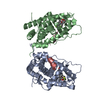
 要素
要素 Homo sapiens (ヒト) / 遺伝子: NR3C1, GRL / プラスミド: pET / 発現宿主:
Homo sapiens (ヒト) / 遺伝子: NR3C1, GRL / プラスミド: pET / 発現宿主: 
 X線回折 / 使用した結晶の数: 1
X線回折 / 使用した結晶の数: 1  試料調製
試料調製 シンクロトロン / サイト:
シンクロトロン / サイト:  APS
APS  / ビームライン: 17-ID / 波長: 1 Å
/ ビームライン: 17-ID / 波長: 1 Å 解析
解析 分子置換
分子置換 ムービー
ムービー コントローラー
コントローラー




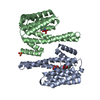
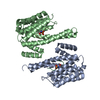
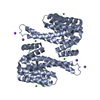
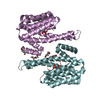
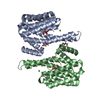


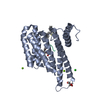
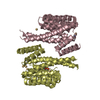
 PDBj
PDBj
















